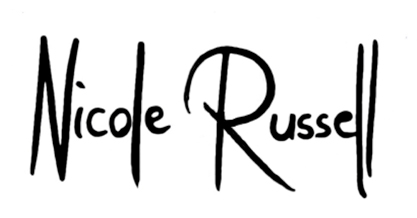
Why Do You Sign Your Painting?
Why do you sign your painting?
Early in your artistic journey you might wonder where to place your signature and how to sign your work. In fact these were the questions I had when I started to paint regularly:
- Where do I sign? I have seen artists sign in the bottom right hand corner or in various other parts of their work.
- What medium should I use? It seems like some artist use a pen and others use paint.
- What colour do I use for my signature? I have seen artists regularly use red, black or white and others use colours from the painting.
- What font or design should I use? Many artists seem to sign with their full name, some like to sign with their initials and others even use an anagram (e.g. Albrecht Dürer, Barry Driver). Some artists sign with either surname or first name (e.g. Rembrandt, Vincent). Some artists use a seal.
Western countries have no rules regarding an artist’s signature and you can make it up as you go. I believe the most important aspect is consistency, since your signature can become part of your brand. However the next question might influence the way you sign your work.
- Why do I sign my work?
The “why” question is the most important question and your answer might be different to mine. Just as an example, here is how I answered the question for myself, which might help you reflect on what is important to you:
- First, I want my signature to show that I created the painting. Anybody, anywhere in the world, if they know me or not, should be able to identify me as the creator of my work. The only way to make sure this is the case, is to sign with my full name and in a readable way. Sometimes, when the surface of my painting is too rough and I can’t sign on the front, I sign on the back of my painting. However, if the painting is framed the signature might be lost or hidden and therefore I prefer signing on the front.
- Second, when I sign my work I feel like I’m still in the process of completing my work with the signature being one of the finishing touches. Signing my work has become part of the process I follow when I paint. This connection to “process” and “finishing touch” has several consequences:
- I can use my signature to balance out my work, which influences where I put it and what colour I use. I may choose to put my signature into an empty area of my work or hide it in a shadow area. However, most of the time I place my signature in the bottom right hand corner of my painting. The reason is that this corner is typically an unimportant part of the work. Most people don’t look at this area and I’m not making this up. You can check out Dr. Dan Hill on eye tracking in art which talks about how we look at artwork and the bottom right hand corner is often ignored.
- Since I consider my signature as the “finishing touch” I sign with my paintbrush and the colour I still have on my palette. Therefore the decisions on which colour to choose and the right value also applies to my signature. This makes my signature part of the work. I take care that my signature doesn’t compete with the image. I see it more as a support cast and I take care that my signature doesn’t stand out. Consequently, sometimes you have to look for it, but it is always there.
Just a hint: The signature on my artwork is not the signature I use for legal documents.
And another hint: Don’t sign too close to the edge of your work and consider how much space a frame may crop off your work. Even if you don’t frame your work, the buyer might. If your signature is too close to the edge it might be (partially) cropped.
With all this being said, other ways of signing artworks may be a lot more fun, e.g. anagrams, initials, or signatures with only parts of the name. These signatures can have character, show confidence and may become a brand, which is also important to take into account. If the fun factor is important you, include some more information about yourself on the back of the painting to make sure it can always be tracked back to you.
Also, it might be important to you to make your signature sit on top of your work and stand out so it can be easily read from a distance. Then it helps to use a different colour from your work, e.g. red, white or black.
Some artists don’t enjoy writing with the brush since it can be very difficult. In this case it is better to use a pen. Enjoying the process is important.
Ask yourself why you sign your paintings and what process you enjoy. Then check if your signature supports your answer.
Nicole Russell